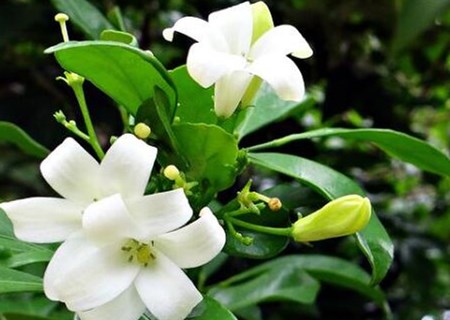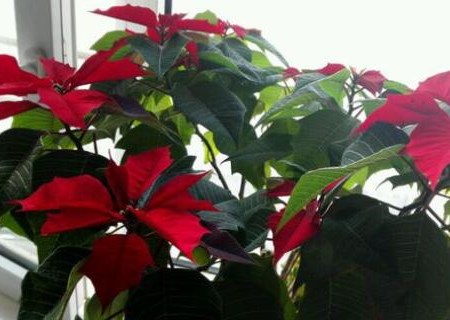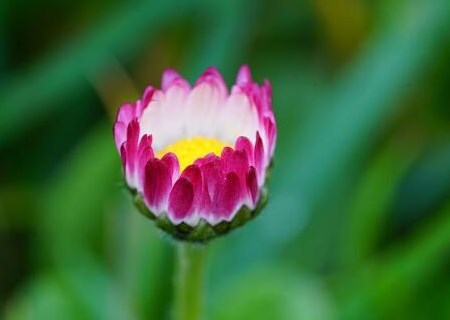What are the seed planting methods of Rutaceae? What's the value? When will it blossom?
Qilixiang grows in sparse or dense forests in low hills or high altitude. it likes a warm and humid climate and is suitable for cultivation in slightly alkaline soil with plenty of sunshine, deep soil layer, loose and fertile soil. So do you know what are the seed planting methods of Qili incense? What's the value? When will it blossom? According to Uncle Li, a Qilixiang grower, he told us that Qilixiang usually blossoms between April and September every year, and sometimes it blossoms in autumn and winter. It will bear fruit after it blossoms, and the fruit period is between September and December.

Seed planting method of Artemisia angustifolia
1. Sowing and reproduction
Plump, ripe scarlet fresh fruit is picked, rubbed in clean water, peel and floating impurities and shrunken grains are removed and dried. The seeds can be sowed in both spring and autumn, and spring sowing is usually used. Spring sowing is possible from March to May. When the temperature is 16 ℃ ~ 22 ℃, it will germinate 25-35 days after sowing. It is suitable for autumn sowing from September to early October. Before sowing, choose the nursery with better water and fertilizer conditions as the seedling site. Turn deeply, crush the soil and rake flat to make the border, the width of the border is 1 to 1.2m. Broadcast or broadcast. Strip sowing according to the row spacing of 30m, sowing seeds and fine sand mixed evenly scattered on the seedbed, sowing soil 1.2cm thick, then covered with grass, irrigation. When 2-3 true leaves appeared, the seedlings began to grow, and the plant spacing 10~15cm was retained. And combined with weeding, topdressing human and animal manure, spraying water to the leaves after application, so as not to burn the seedlings with fertilizer, and planting when the seedlings are high 15~20cm.
2. Cuttage propagation
It should be carried out in spring or from July to August in the rainy season, and the 1-year-old branches with full tissue, medium maturity and gray-green skin should be cut as cuttings, but the tender branches of the same year should not be used. The cuttings are long 10~15cm with 4-5 nodes, and the leaves between 1 and 2 internodes are cut off to reduce water evaporation on the leaf surface. In order to expand the root surface and water absorption, the cut should be cut flat to improve the survival rate of cutting. The temperature was 18 ℃ ~ 25 ℃ and rooting was 35 ~ 40 days after cutting. if the temperature was lower than 18 ℃, it would be delayed for 5 ~ 7 days. If using "root sun" rooting agent to treat rooting will be faster, treatment method: 350 times liquid rooting agent and yellow mud mixed into mud, cuttings are dipped in the mixture, after treatment, the mud is dry and then inserted in the seedling pond, when inserted in the seedling pond, you should first use a stick to insert the seedling, so as to prevent the yellow mud from leaving the cuttings and affecting the rooting effect. The cutting medium can be directly used with river sand or yellow mud, and the row spacing is 9cmx12cm. After cutting, it should be covered with 70%-80% shade net, then watered thoroughly, and then sprayed once or twice a day to keep the soil moist in the bed. The temperature was 18 ℃ ~ 25 ℃ and rooting could be achieved at 20 ~ 25 days after insertion.
3. Striping propagation
Generally carried out in the rainy season, part of the semi-aging branches are buried in the soil by ring peeling or cutting, wait for them to take root and sprout, and can be planted after being cut off in late autumn or the following spring.
Second, what is the value of Qili incense
1. Fengshui action
Plants are spiritual, plants contain five stars, there is a magnetic field between plants and all things, and the particles of various objects can influence each other and transfer changes. And Qilixiang, Qilixiang is a series of golden white plants in the five elements, that is, plants with white bark, white flowers or white leaves, it regulates the lungs of the human body, and its fengshui means "sweet for a long time". Therefore, Qilixiang can bring good fengshui to the home, implying that your family is warm and sweet for a long time.
However, plants have yin and yang, that is, they have yin and yang attributes. Plants that like yang, if planted in a damp environment, are weak, flowerless, fruitless, or die. Qilixiang is a sunny plant, so it should be placed in a sunny place, otherwise, poor plant growth may corrupt fengshui, which is counterproductive.
2. Ornamental value
Jiuli incense trees are elegant in appearance, vigorous in branches, evergreen in four seasons, white and fragrant in blossom, and dazzling in Zhu Guo. They are excellent bonsai materials. It is suitable to watch all the year round, and the effect is the best when the new leaves are unfolded in early summer. The branches and leaves of Jiuli incense can be used as medicine, which has the effect of relieving pain, promoting blood circulation and dispersing blood stasis, stomachache, rheumatism arthralgia, toothache, swelling and pain, insect and snake bites, and so on. In addition, the flowers, leaves and fruits of Jiuli incense all contain essential oils, which can be used to extract cosmetic and food flavors, and leaves can be used as seasoning spices.
3. Medicinal value
Qili incense is produced in Sichuan and Hunan. Seven li fragrance sour, bitter, pungent, warm, return to the liver meridian. It has the effect of promoting blood circulation and detumescence, detoxifying and stopping dysentery. Qi Li Xiang is often used to treat injuries caused by falls and dysentery. Can be taken internally: fried soup, 9-15g. External use: appropriate amount, tamping. Qilixiang can treat colds, headaches, stomachaches, toothache, rheumatism and bone pain. Qi Li Xiang promotes blood circulation and removes blood stasis. Treatment of amenorrhea, dysmenorrhea, blood avalanche, infantile accumulation, mumps.
Time: 2019-03-17 Click:
- Prev

Euphorbiaceae poinsettia appears yellow leaves how to do? Is it poisonous? Can I put it in the bedroom?
Poinsettia has emerald green leaves, bright buds, white, light yellow, pink, bright red and so on, in which double red bracts are the top grade, which is an important potted indoor decoration plant in autumn and winter, so what about the yellowing and falling leaves of poinsettia in the process of potted plants? Is it poisonous? Can I put it in the bedroom?
- Next

What are the seed planting methods of Xiaoli flower (also known as Xiao Li Chrysanthemum)? What's the value? Does it bloom in winter?
Xiaoli is a perennial bulbous herb, which has low plants and long florescence. It is an excellent ground cover plant. It can also arrange flower beds, flower borders, etc., and can be used as potted ornamental plants or cut flowers.
Related
- Fuxing push coffee new agricultural production and marketing class: lack of small-scale processing plants
- Jujube rice field leisure farm deep ploughing Yilan for five years to create a space for organic food and play
- Nongyu Farm-A trial of organic papaya for brave women with advanced technology
- Four points for attention in the prevention and control of diseases and insect pests of edible fungi
- How to add nutrient solution to Edible Fungi
- Is there any good way to control edible fungus mites?
- Open Inoculation Technology of Edible Fungi
- Is there any clever way to use fertilizer for edible fungus in winter?
- What agents are used to kill the pathogens of edible fungi in the mushroom shed?
- Rapid drying of Edible Fungi

